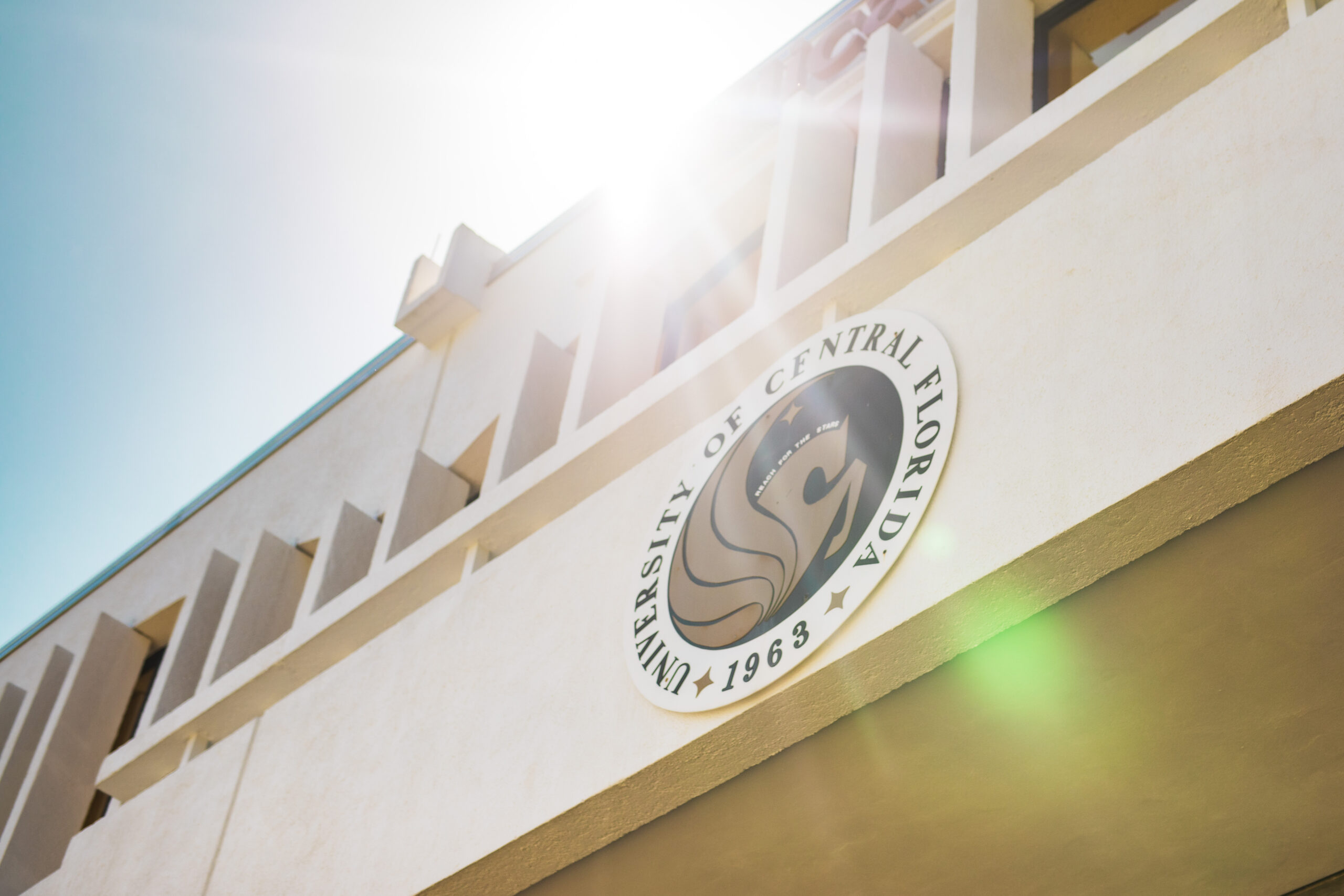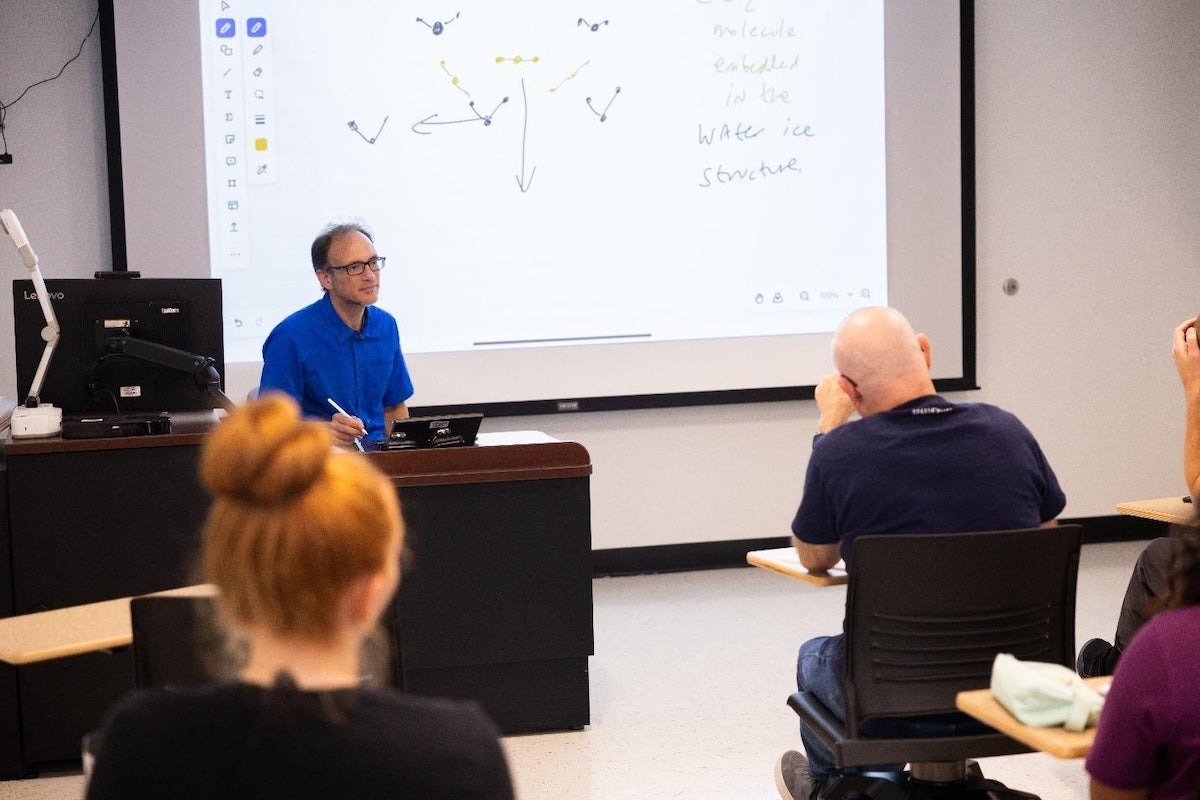Researcher Launching into Microgravity with Blue Origin
Julie Brisset, an associate scientist in planetary sciences at UCF’s Florida Space Institute, was recently awarded a $250,000 grant from NASA to study levitating dust clouds in microgravity.
Brisset, who earned her doctorate in 2014 at the University of Braunschweig in Germany before becoming a postdoctoral fellow at UCF, will work with the aerospace manufacturer Blue Origin to test a new microgravity experimental technology.
The Dust In-Situ Manipulation System is a platform that allows for the long-term study of homogenously levitating dust clouds in microgravity. The DIMS will be able to conduct an
The composition of anything observed in space is deduced through its interaction with light. “The way we study the whole universe is by looking at it,” says Brisset. “So the interaction of light with anything, the more we understand it, the better we will know what we’re looking at.”
When looking at a dust cloud
On Earth, researchers are limited in the ways in which they can study levitating dust clouds as gravity impedes the production of a cloud with particles that homogeneously sit in the air. In a lab setting, researchers have been able to use air jets and ultrasound contraptions to levitate clouds, but they run into the problem of particles being sorted by size rather than levitating homogeneously. Drop towers can be used to achieve freefall, simulating microgravity conditions found in space. But even then, freefall conditions only last for a few seconds, limiting observation time.
The Blue Origins flight will create approximately three minutes of freefall microgravity conditions inside the rocket. DIMS will be on board and will conduct a number of different experiments in those three minutes. If it works, the ultimate goal is to launch DIMS into orbit where it will be in freefall conditions for a year.
While on the flight, DIMS will create dust clouds by injecting dust particles into its chamber and using its cloud manipulation system to confine the particles, allowing them to stay in a cloud. High-speed cameras will be used to create three-dimensional images of the clouds created. During the three minutes of microgravity, four experiments lasting approximately 40 seconds will test cloud creation using three different dust types and two different gas pressures.
“The ultimate goal is an orbital platform that can be useful for a range
Understanding levitating particles is of interest in a number of different fields, from astrophysicists investigating the birth of stars and planets to atmospheric scientists researching city smog. If DIMS is approved to go into orbit, researchers from these various fields would be able to conduct their research over hours to months.
Brisset is excited to see the collective work of a number of her colleagues be launched into this next step.
“I think it’s really exciting to get into that phase of the project where you’re actually going to see something fly,” she said.
Share This Article

UCF Women’s Club Honors 3 Graduate Students with Prestigious Sheila B. Somerville Scholarship
Financial support is often the cornerstone of academic success, and for many students, scholarships open the door to higher education. Beyond easing financial stress, these awards provide recognition, motivation, and a...
Latest News

UCF Launches 1st Planetary and Space Sciences PhD Program in Florida
As SpaceU, UCF is pushing the boundaries of exploration by launching a groundbreaking new doctoral program in the planetary and space sciences. Now, aspiring researchers can apply to the inaugural cohort of...

UCF Fulbright Awardees Bring Their Passions to a Global Scale
Each year, the Fulbright Program offers opportunities for American students to conduct research, teach English, or pursue graduate study abroad. One of the most prestigious international exchange programs in the...

Unleash Opportunities with a UCF Graduate Degree
A graduate degree has the power to unleash opportunities by expanding careers, opening doors to new fields, and increasing lifetime earnings. According to the U.S. Bureau of Labor Statistics (2024),...

UCF Rosen College Ranks No. 1 in the World for Hospitality Education for 2025
One of the most anticipated theme parks in the world is about to open its gates — and right next door, the No. 1 hospitality and hotel management school on...